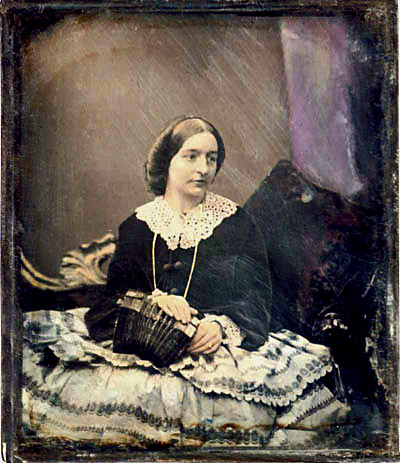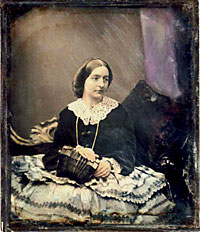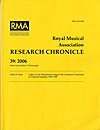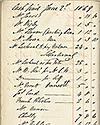The Picture Gallery for this issue features a photograph—after a daguerreotype from the London
studio of Antoine Claudet, c. 1857—of Ms Mary Baker (d. 1882), nicknamed ‘Min’, holding an English
concertina, probably a Wheatstone (see picture).

Ms Mary ‘Min’ Baker (d. 1882),
as shown in a photograph after a daguerreotype
by Antoine Claudet of 107 Regent Street, c. 1857;
reproduced with the kind permission of Rev. Ian Graham-Orlebar,
a descendant of the Baker family.
Mary was one of seven children born to a well-to-do family of merchants with extensive sugar holdings in
Jamaica and Mauritius. In 1855, Mary, still unwed (she eventually married into a family named Cawsten),
became the surrogate mother to the children of her widowed brother Samuel White Baker (1821–1893), who,
after his wife passed away that year, sought solace in hunting and travel. In fact, Sam Baker became
well known as a big-game hunter and explorer, and together with his second wife, Florence Szasz (von Sass),
set out to search for the source of the Nile and eventually discovered Lake Albert (named after Prince Albert)
in 1864 (for which he was knighted in 1866).1
What is particularly interesting about the photo of Mary and her concertina is that we may be able to
identify the instrument she is holding and when she bought it. As Allan Atlas has suggested, Mary may
well be the Miss Baker who purchased Wheatstone no. 6628 for twelve guineas on 31 October 1854, and later
treated herself to two more concertinas: on 3 December 1858, when she borrowed Wheatstone 10663, and
27 August 1859, when she paid £2.0.0 for Wheatstone 9981.2
Finally, Mary might not have been the only member of the family who played the concertina, as the Wheatstone
sales ledgers also record transactions for a Mrs and Mr Baker, with the latter having purchased his concertina
on 23 August 1859, just four days prior to Ms Baker’s final
transaction.
Author
Pat Shipman (
)
is Adjunct Professor of Biological Anthropology at The Pennsylvania State University.
Dr. Shipman, in the early part of her career, was a taphonomist who pioneered the use of
scanning electron microscopy in studies of ancient bone assemblages to determine whether
the bones were modified by animals or hominids. She studied fossil assemblages from early
Pleistocene sites in Kenya and Tanzania and has examined purported worked bones from
Europe and North and South America. In recent years, she has concentrated on the history
of anthropology and evolution. Her research concerns who makes discoveries and why and
how they are interpreted. She has written several books on the subject enjoyed by both
general and specialist audiences, including Taking Wing; Archaeopteryx and the Evolution
of Bird Flight (New York: Simon & Schuster) which won the Phi Beta Kappa science book prize.




